Beautiful And Bizarre Natural Phenomenon That Make Us Want To Go On A World Tour
Planet Earth is a weird and wonderful place to live and some of the things that we are able to see are almost unbelievable in their beauty and wonder. These stunning, weird, and wonderful natural phenomena range from eye-catching illusions in the sky, to bizarre flora and fauna, to the mysteries in the depths of the ocean.
Each image on the list has been specifically chosen because of its stunning and sometimes almost otherworldly visual appeal. We definitely have our own favorites on this list, and we’re sure that you’ll have plenty of your own, too. Sit back, relax, and prepare to be blown away by the range of wonders that planet Earth has to offer. We hope you enjoy this list as much as we do!
Lake Hillier, Australia
Off the south coast of Western Australia sits Middle Island, which makes up part of the Recherche Archipelago. Middle Island is famous for its pink-hued body of water known as Lake Hillier. Surrounded by dense woodland, it certainly is magnificent.
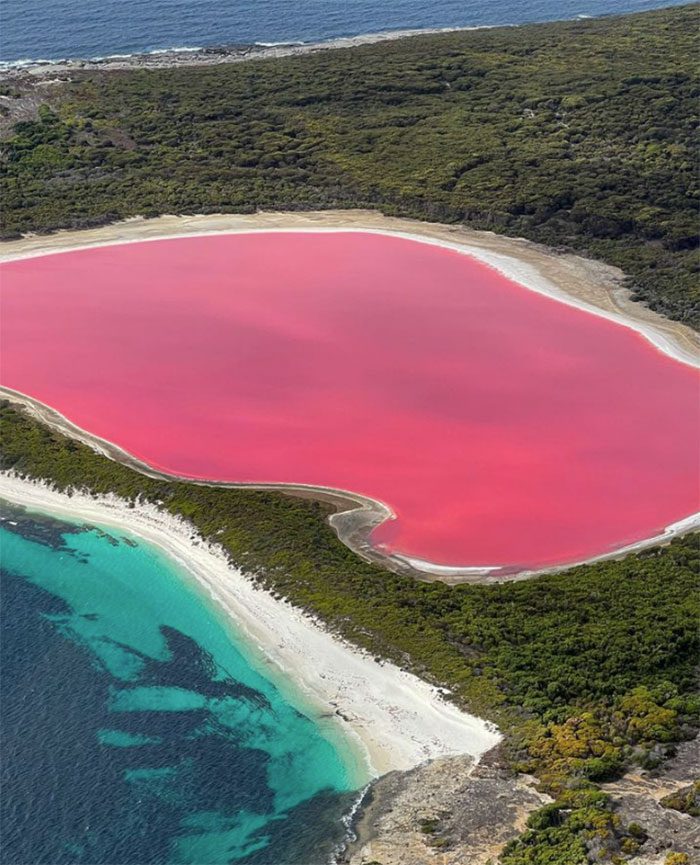
The vivid pink color is a permanent feature of the water and is thought to be caused by the microscopic organism Dunaliella salina which is found in saline bodies of water such as Lake Hillier. It’s a fantastic example of how even the smallest organisms can lead to wondrous creations.
Sakurajima Dirty Thunderstorms, Japan
Sakurajima is the most active volcano in Japan. It was formerly an island before an eruption in 1914, after which the flow of lava set and connected the island with the mainland. Sakurajima is known locally as Cherry Blossom Island, though the image doesn’t remind us of sakura trees.
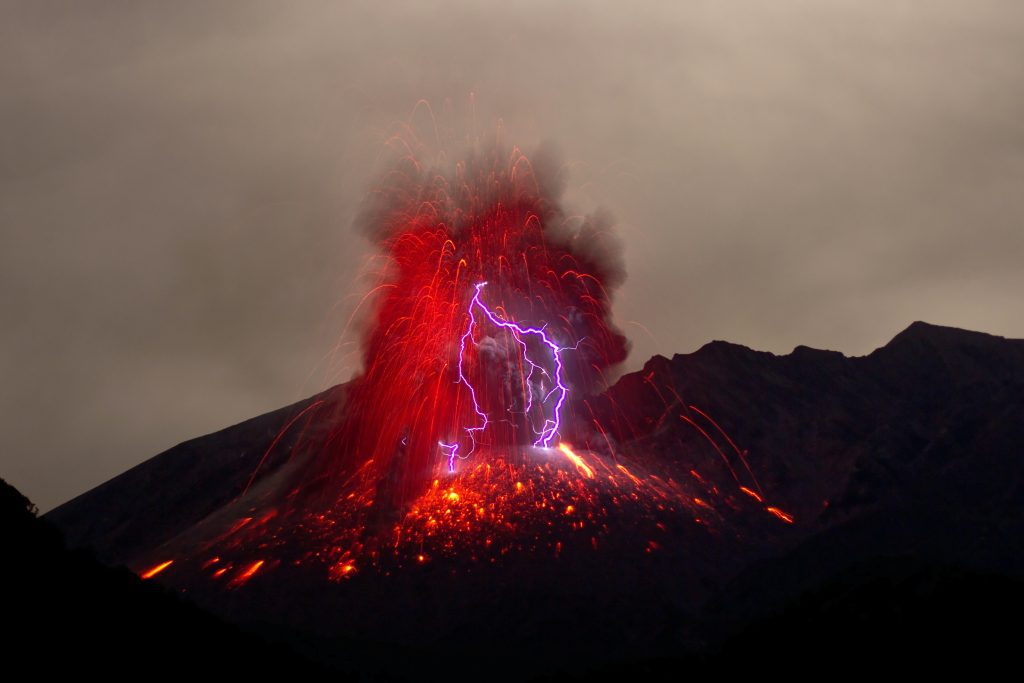
Dirty thunderstorms are caused by colliding particles of volcanic ash, which generate static within the plume of a volcanic eruption. As you can see from the image, the results are violent and spectacular. A truly awe-inspiring sight; we’re just glad it wasn’t us taking the photo!
Whirlpools
When opposing currents collide in a flowing body of water, such as a lake or river, the resulting force generates a whirlpool. These look pretty cool and powerful, but in reality, it is very rare for the cyclical currents to reach above 20 mph.
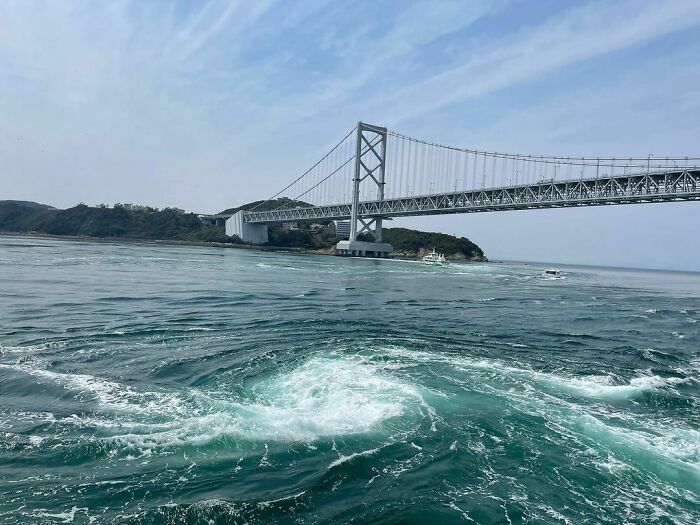
Having said that, we don’t really fancy getting too close to these aquatic phenomena. The largest and most powerful whirlpools are known as maelstroms and are generally found in fast-moving shallow bodies of water and at the bottom of waterfalls.
Ice Penitentes, South America
These curiously shaped ice formations almost look like sculptures, and we’re not the only ones who think so. They are known as ice penitentes because they resemble the form of little priests kneeling in prayer. They are a really fascinating example of mother nature’s work.
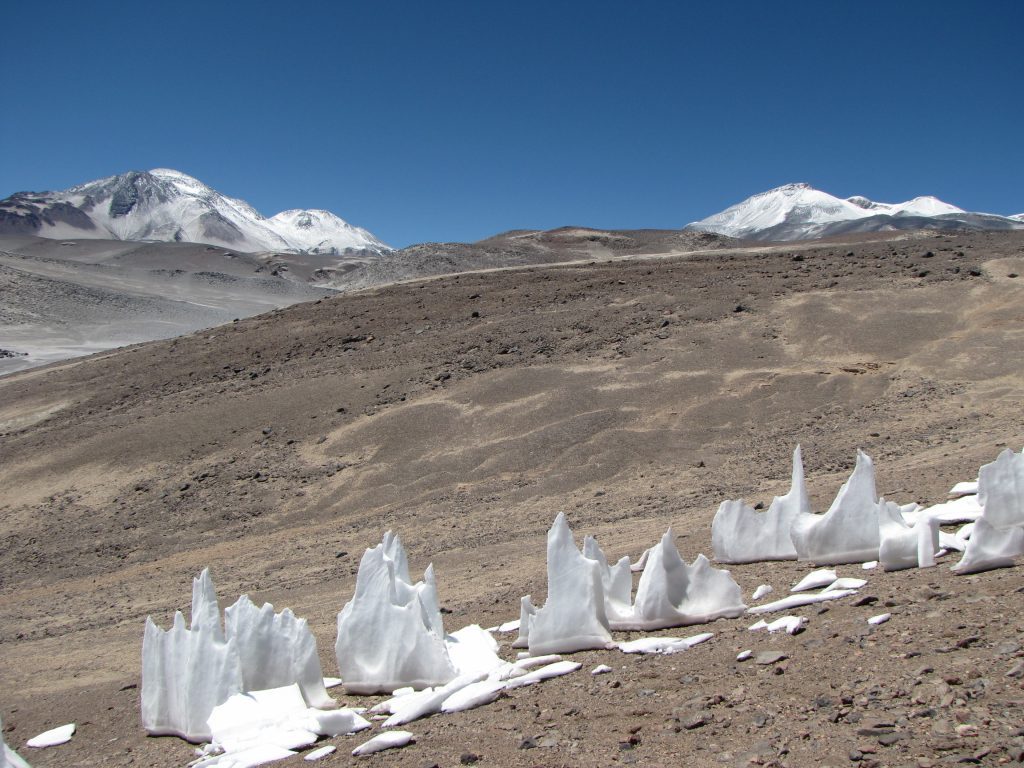
They are actually created when water vapor moves in the direction of the light and freezes as a result of the sub-zero temperatures. It’s amazing how the interaction of two factors outside our visible range can yield such cool results.
Waterspout
When a tornado is over a body of water, the cyclical power sucks water up and the resulting phenomenon is as spectacular as it is terrifying. Waterspouts of varying sizes are well documented across the world, and this is a great example.
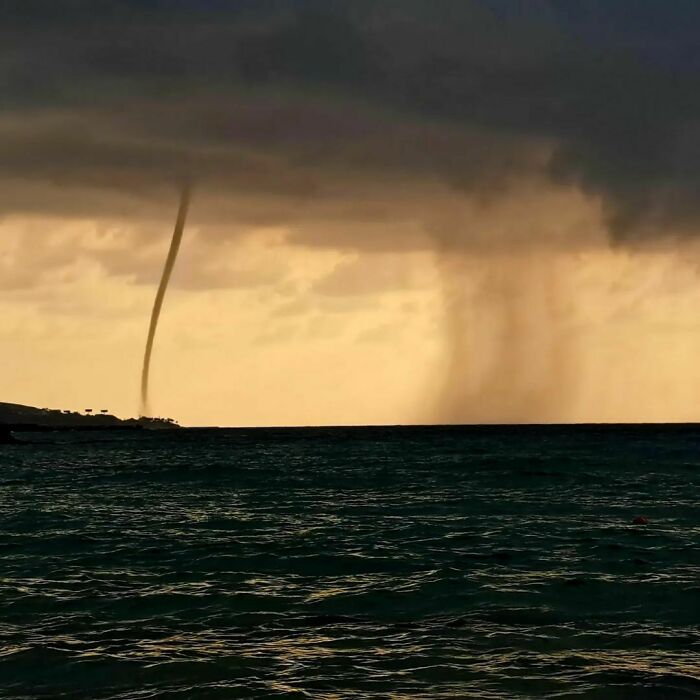
Eventually, the cyclical power dissipates, and calm is restored. But adrenaline junkies, known as storm chasers take great pleasure in chasing these and capturing images for us to enjoy from the comfort of our computer screens… safe on dry land.
Turquoise Ice Crystals, Russia
Ice is one of the most beautiful occurrences in all of nature, and when the temperatures around it fluctuate, its properties become unstable. This can result in a fantastic range of colors and effects. Just look at the brilliance of the spectrum of blues on display!
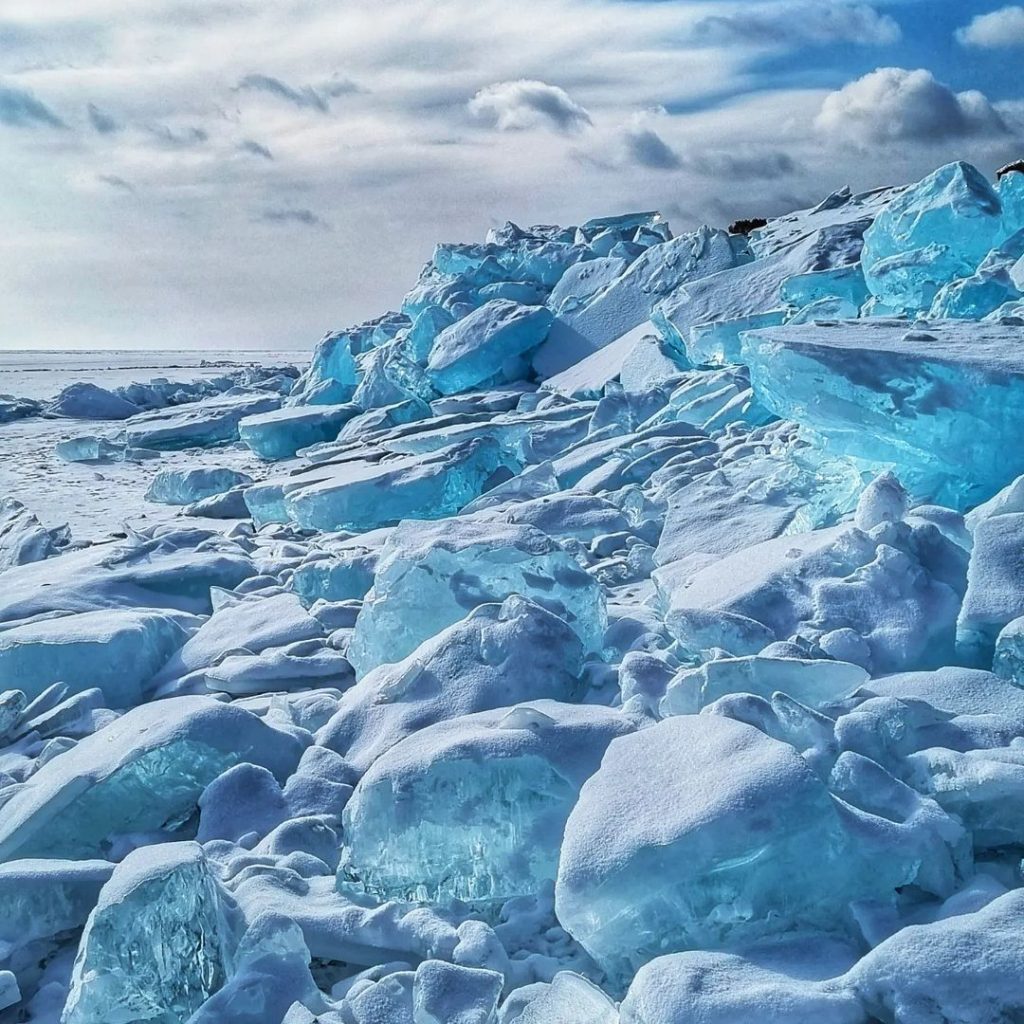
This image almost looks otherworldly in the way the colors and structures of the ice combined. Taken in Russia, the frosty and translucent ice gives an almost artistic feel to the scene, which almost looks carved and sculpted out of gemstones.
Shooting Stars
Perhaps one of the most iconic of all naturally-occurring phenomena is the shooting star. Of course, they are not actual stars; that would be catastrophic! The misnamed astronomical feature are small meteors that create a dazzling display as they penetrate the atmosphere.
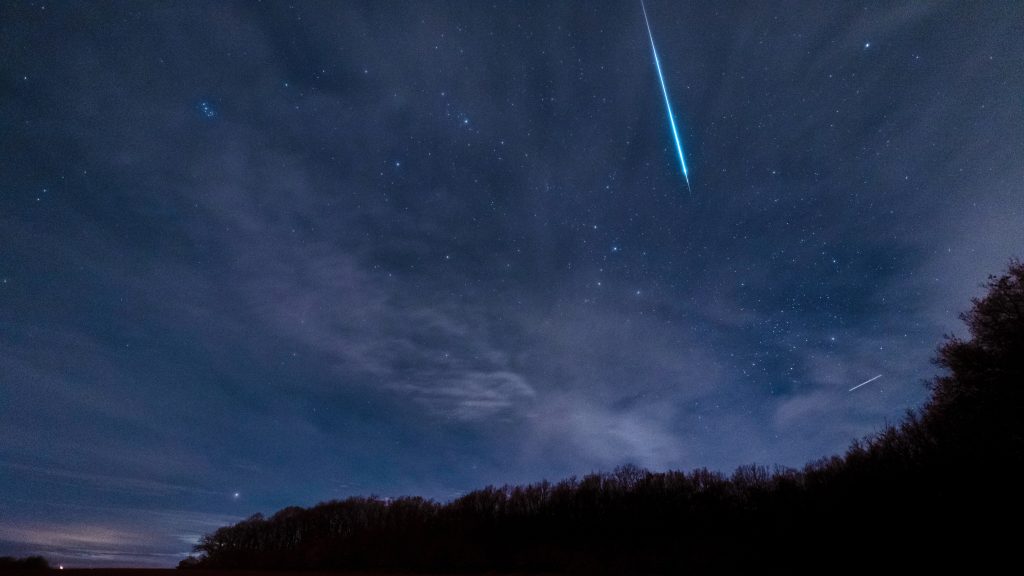
As the particles interact with the earth’s atmosphere, they heat and burn up, which gives them their distinctive bright tail. And they’re not as rare as you might think. Frequent stargazers can spot them roughly every fifteen minutes—in an area free of light pollution, of course.
Green Flash Sunset
This is a relatively rare natural phenomenon, so we are glad that somebody was on hand to capture it. It’s known as a green flash sunset because of the way the sun briefly appears as a bright green “flash” on the horizon.
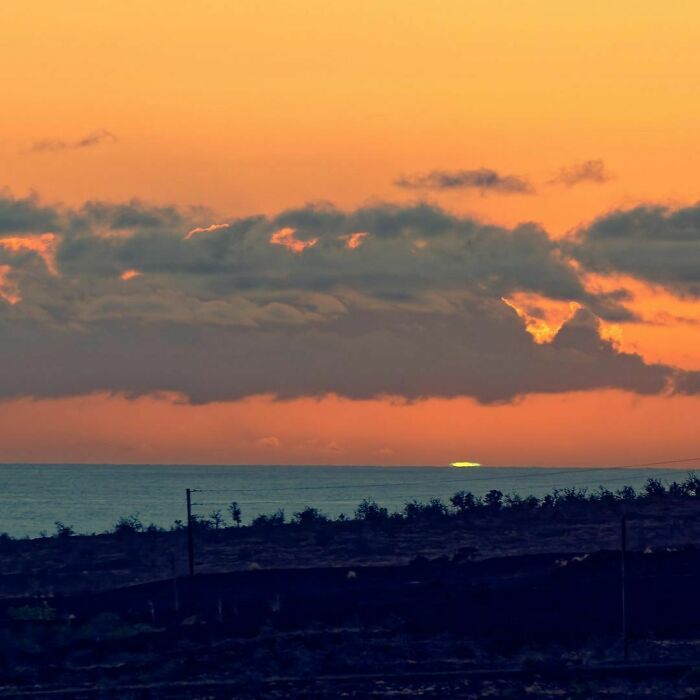
Of course, we are more used to seeing a sunset in shades of orange and red, but when the atmospheric conditions are just right, the sun refracts through the atmosphere and appears to be green. It’s spectacular and beautiful, yet very unusual.
Ice Caves, Iceland
Although it’s often joked that Iceland and Greenland should switch names, the former has plenty of beautiful frozen displays that fit its name. Take this scene, for example. Usually, these are natural caves made out of limestone and contain significant amounts of perennial ice. This permafrost provides breathtaking views.
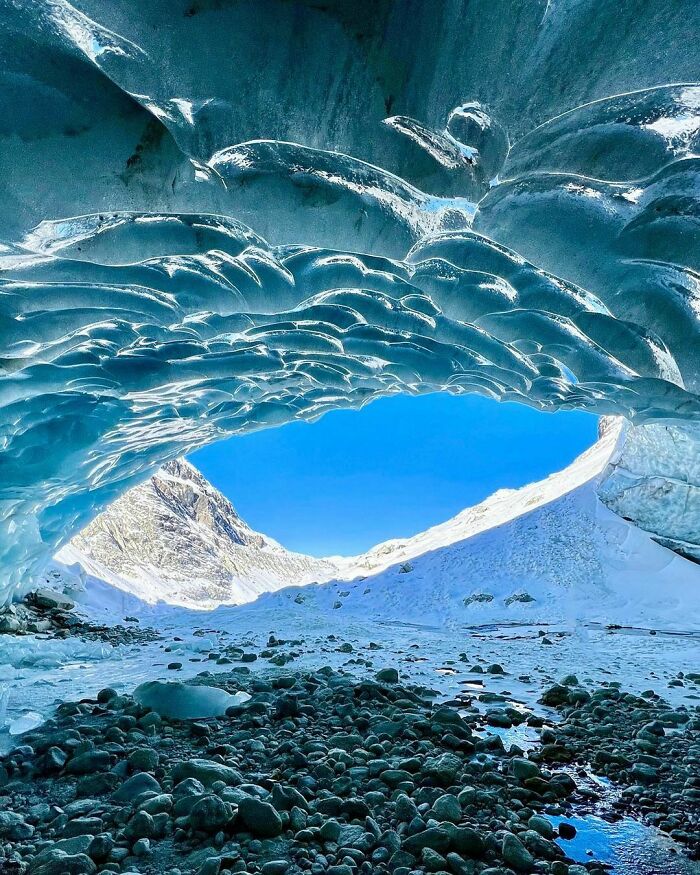
The Icelandic landscape is stunning in its beauty, and caves such as the one in the photograph are very indicative of the unique sense of wonder associated with the island environment. It would certainly be worth braving the cold to see such a sight.
Striped Iceberg, Antarctica
If you thought the Russian ice crystals were cool, take a look at this. Icebergs alone are fantastic sights—we can barely comprehend their size—but this example of a striped iceberg elevates its aesthetic appeal even higher. So, what causes those iconic stripes?

Each layer is made up of snow, but the color comes from reactions to different environmental conditions. Green stripes come from algae-rich saltwater, blue comes from water that was frozen too quickly for bubbles to form, and yellow, black, and brown are caused by sediment.
Snow Chimneys, Antarctica
It’s quite strange to think of volcanic activity in the frozen wasteland of Antarctica, but that is exactly what is captured in the image below. The steam we see in this image is generated by the heat inside the volcano.
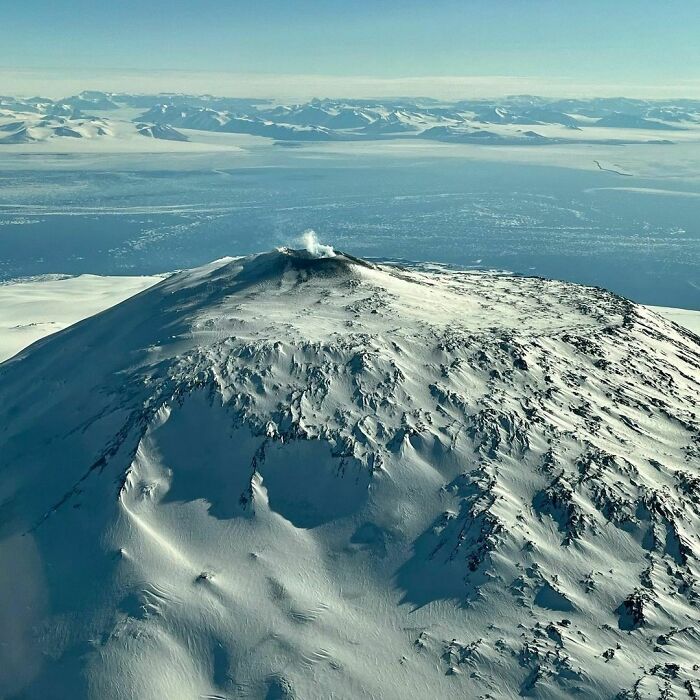
It interacts with the frozen snow and ice that has encased it and this leads to the formation of snow chimneys. Each phenomenon alone is cool, but the interaction and resulting setting are extra fascinating. There really is so much wonder in the world.
Moeraki Boulders, New Zealand
These unusual and spherical boulders are well known as a tourist destination and it is not hard to see why. The largest of them measures over two meters in circumference. Local legend says the boulders are the remains of eel baskets.
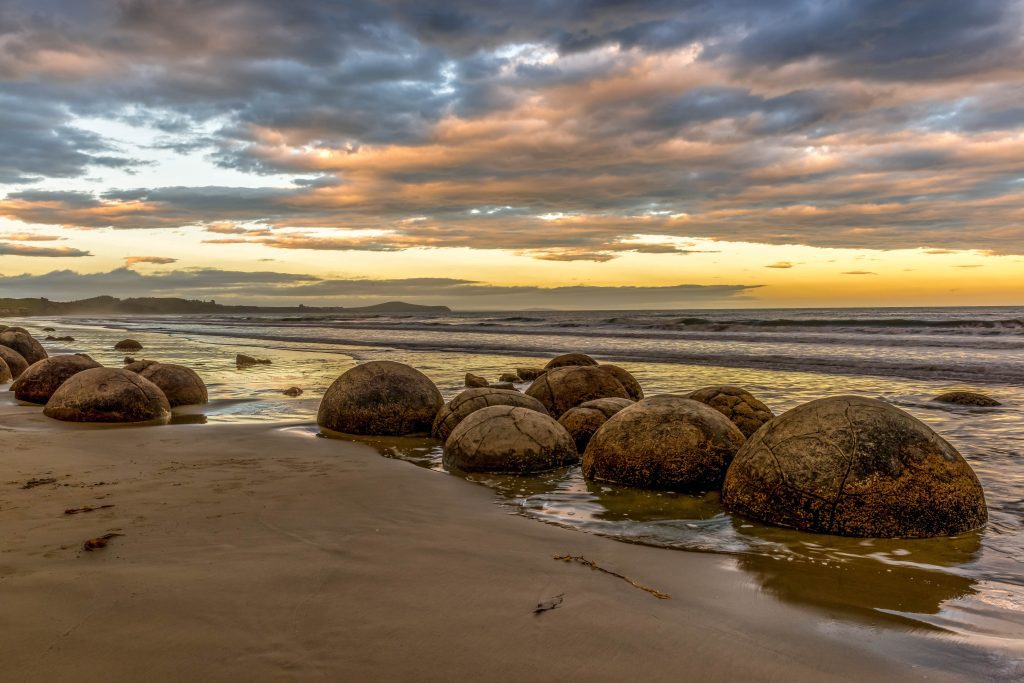
Although the Moeraki Boulders are not the only example of spherical boulders in the world, their quantity and size mark them as one of the finest examples. New Zealand is full of beautiful sights, and these continue to rank among the top destination for visitors.
Volcanic Lightning
Here we have another example of volcanic, or dirty, lightning. In this image you get a real sense of the raw power of the forces involved in creating such a wonderful display. When the particles of ash inside the volcanic plume accumulate, the energy is immense.
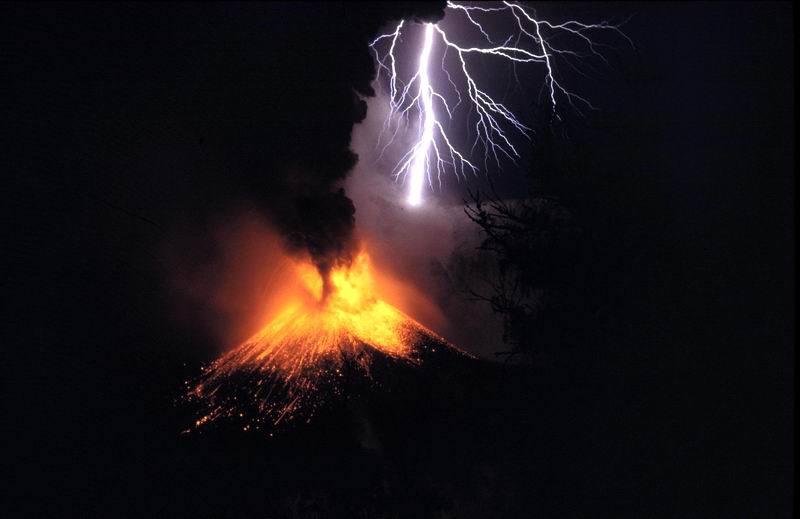
As if volcanoes aren’t spectacular enough, this phenomena certainly adds to their visceral sense of power and wonder. Volcanoes have long held a certain sway over mankind, and this image makes it clear why. Is it just us, or does this look like a snapshot of the Titan battle in Hercules?
Pando Aspen Grove, Utah
What do you expect when you look at a forest? Hundreds of plants and trees all sharing the same space, right? Well, this grove is actually made up of a single organism, the quaking Aspen tree. It is classed as a single living organism because its different parts possess identical genetic markers.
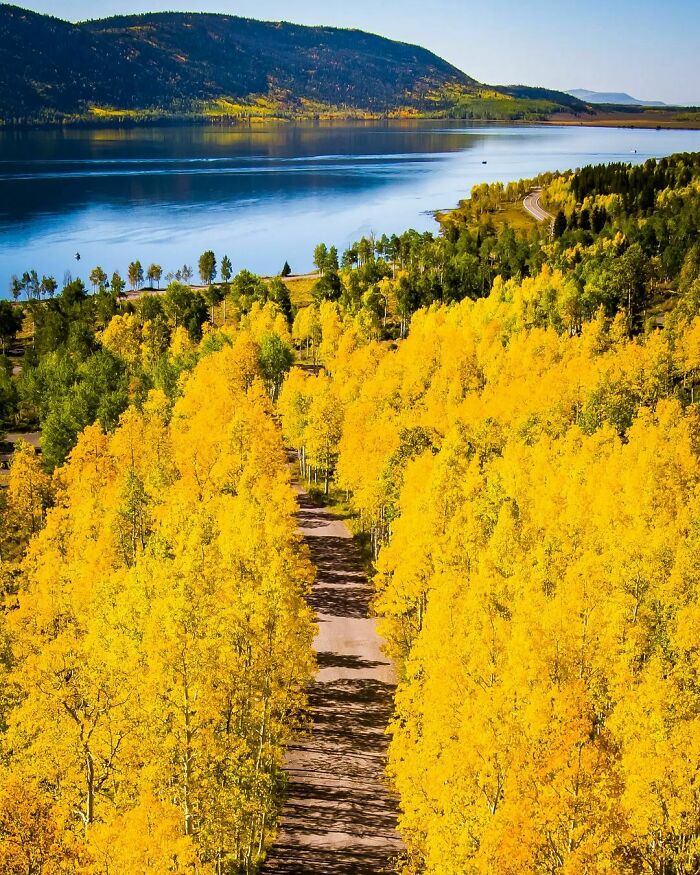
It is generally assumed that they’re connected underground by a massive, intricate, interconnected root system. We’ve heard of this occurring with other plants, so we wouldn’t have guessed it right away just by looking at the forest. The golden glow of its leaves only serves to make the photo more beautiful.
Morning Glory Cloud, Australia
The morning glory cloud is a very rare meteorological phenomenon that consists of a low-level cloud wave and associated cloud, which combine to form the eye-catching roll cloud you see below. These have been spotted in various countries all across the world.
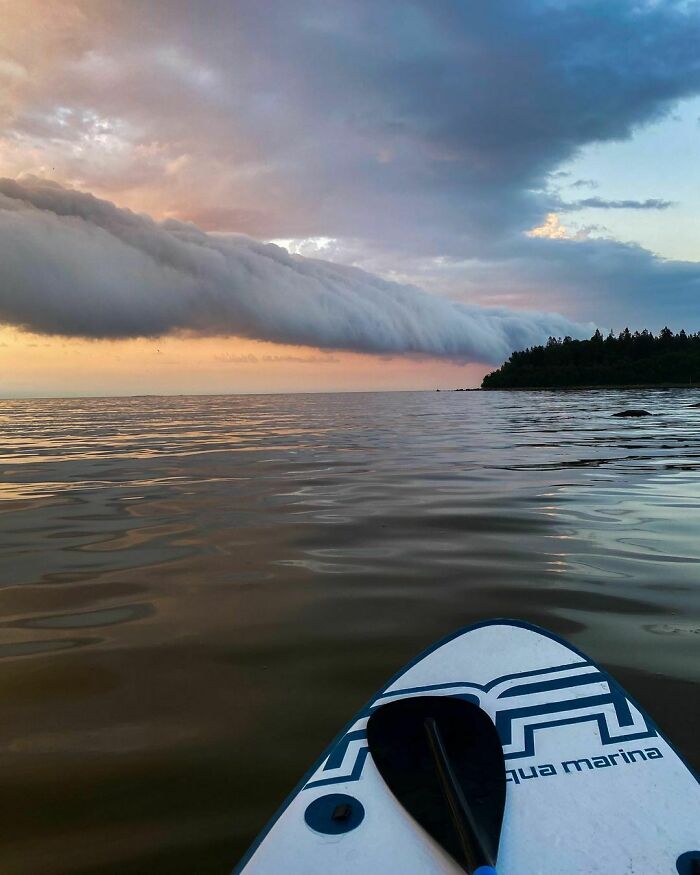
These roll clouds can measure an absolutely astonishing length of over 1,000 kilometers and over two kilometers in height. Sometimes there is only one cloud on display, but they can form in rows of rolls of up to ten consecutive clouds!
Forest of Knives, Madagascar
In the Tsingy de Bemaraha National Park in Madagascar is a geological formation that can’t be found anywhere else in the world. Known as the Forest of Knives, these limestone needles expand throughout the park. In fact, they are the inspiration for the park’s name.
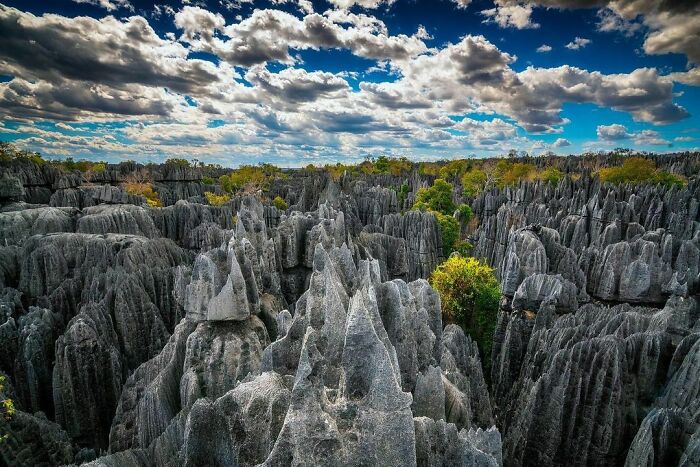
The word Tsingy can roughly be translated into English as “where one cannot walk barefoot,” and we can definitely see why. Spectacular and unusual, these rock formations are certainly worthy of a place on our list of weird natural phenomena.
River of Five Colors, Colombia
This river in Colombia is known as the “Liquid Rainbow.” If you want to visit, you have a large window of opportunity. From July through to November, the river’s water is variously colored yellow, green, blue, black and, as shown in this picture, red.
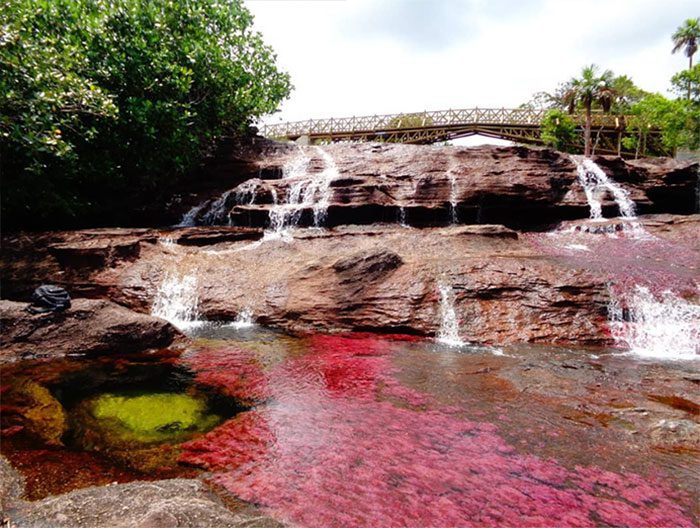
The colors are caused by the presence of various fauna that dye the water as it flows over and around them. Depending on the time of year, the water changes appearance. This river is one of the most photographed in the world, and we can see why!
Sailing Stones, USA
In the deserts of the Death Valley National Park in California, you can find an unusual but easily explained phenomenon known as the sailing or sliding stones. These inanimate objects travel seemingly on their own and leave visible tracks—hence the name.
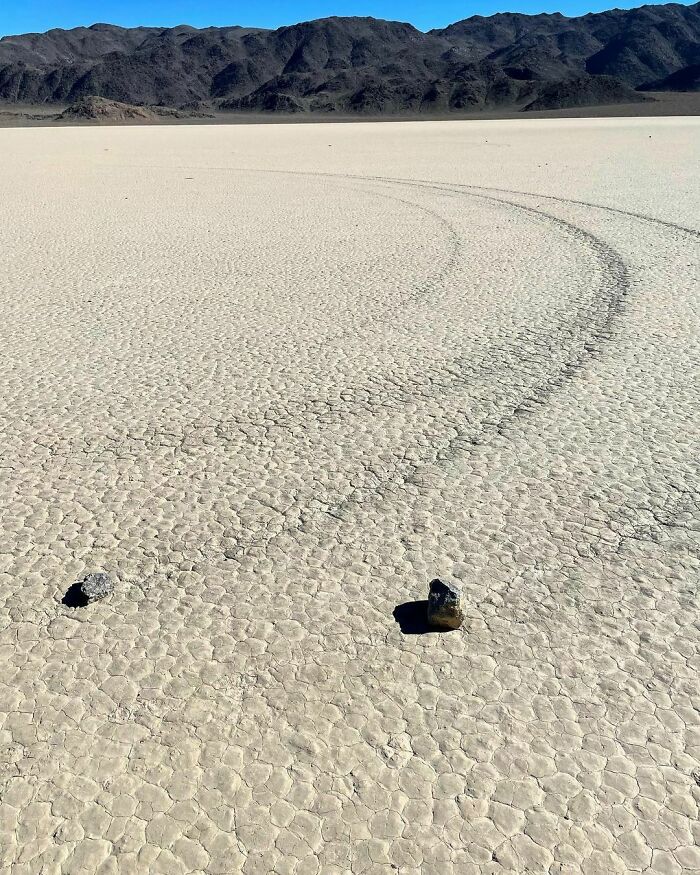
This movement isn’t caused by cryptids or pranksters. Cold temperatures freeze the desert overnight, creating a frictionless surface for the stones to glide on as the winds gently push them along. Interestingly, it wasn’t until 2013 that this explanation was proven.
Eternal Flame Falls
This waterfall is found in upstate New York, close to the Canadian border. Behind the face of the waterfall is a natural gas leak that fuels an eight-foot-high flame. The flame is sheltered enough from the wind to burn consistently.
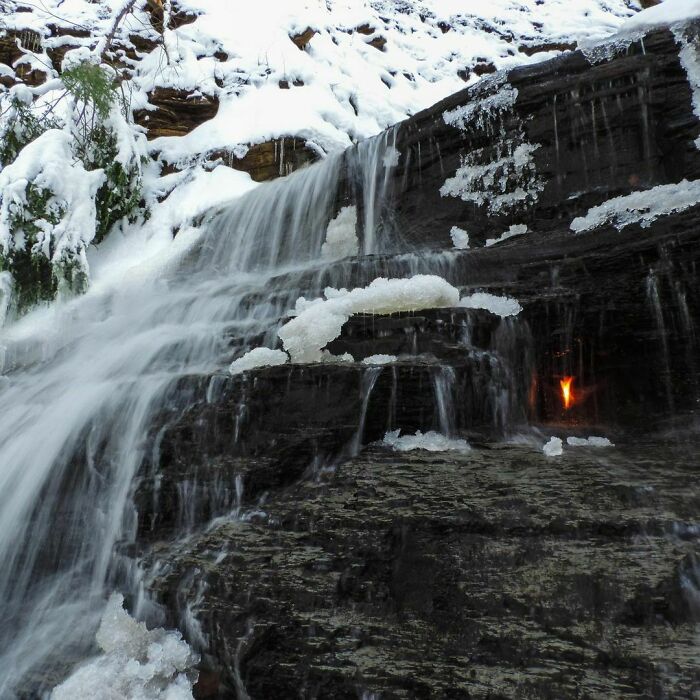
This one is a little bit of a cheat as the flame does require relighting from time to time, but it is well known enough by intrepid hikers that the flame is pretty much permanently alight. Not quite eternal and not fully natural, but very cool nonetheless.
Pele’s Hair Lava, Hawaii
This unusual occurrence is also known as witch’s hair. It happens when droplets of lava are caught and elongated by the wind, which stretches them out into what are basically long, thin glass wires. If you thought humans were the ones who invented glassblowing, think again.
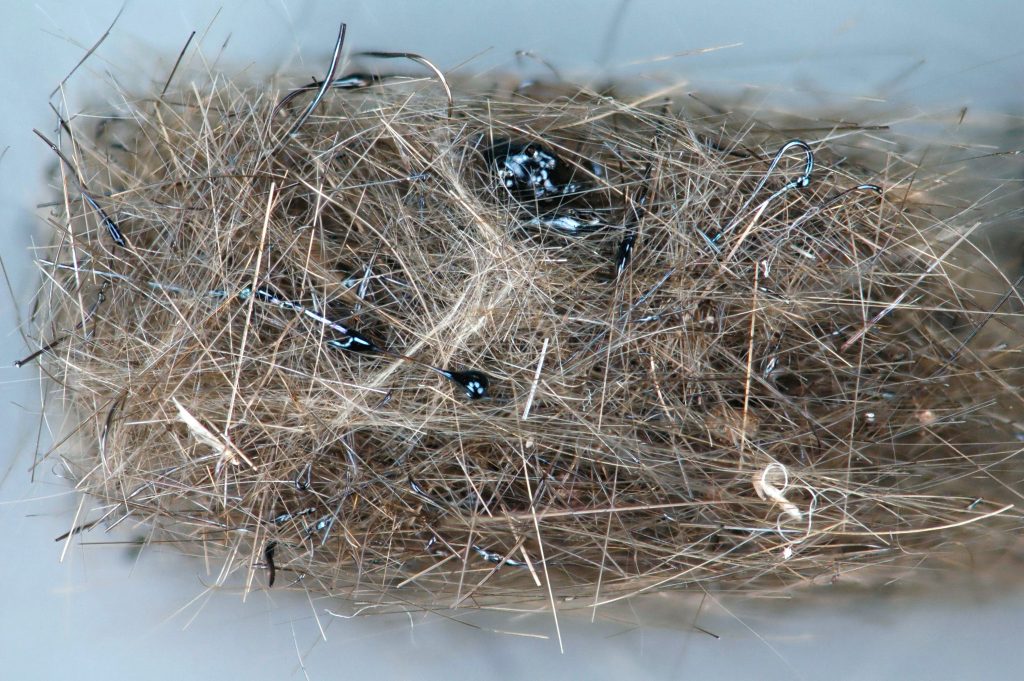
These wires can extend up to around six feet in length! As for the name, if you didn’t know, in Hawaii, there is a goddess of volcanoes named Pele. It’s fitting that her name is used in this lava-created phenomenon.
Eye of the Sahara, Africa
Also known as the Richat Structure, this circular geological feature is essentially an eroded circular dome that is some twenty-five miles in diameter. The exposed sedimentary rock appears as concentric rings. It was listed as one of the first one hundred geological heritage sites.
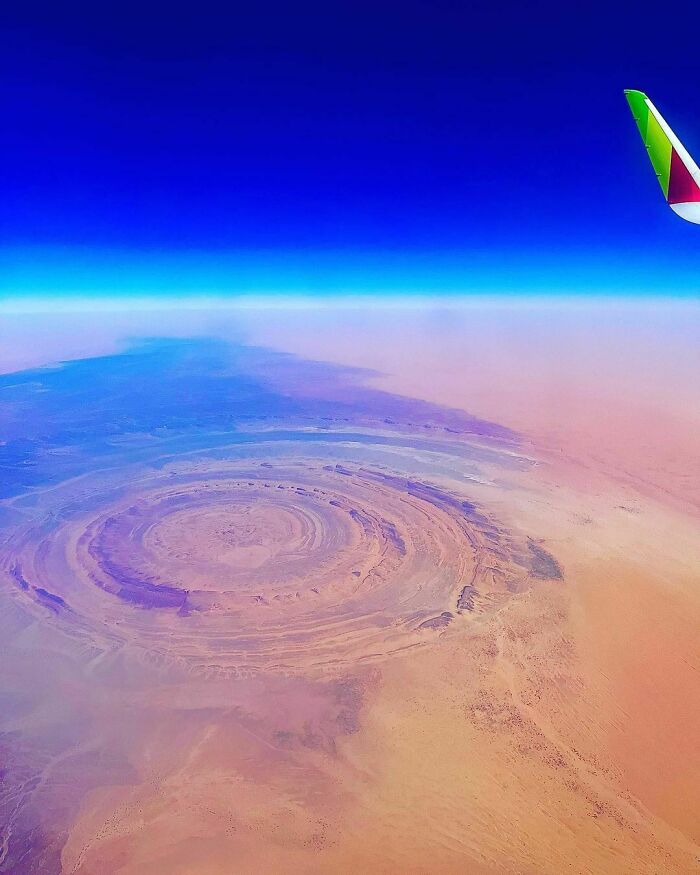
The appearance of the eye is caused by the different ages of the rock that have gradually appeared due to erosion. To truly experience the beauty, you need to get a bird’s eye view, but judging by the picture, it seems like the trip is worth it.
Nacreous Clouds
Nacreous clouds or ice polar stratospheric clouds are a specific type of cloud formation that is found in or near the arctic circle. They appear most prevalently when the ambient temperature drops below freezing, creating an array of colors reminiscent of a watercolor painting.
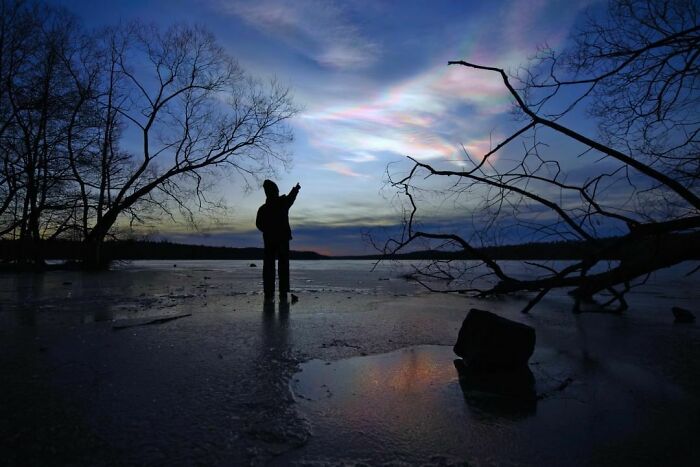
The term nacreous stems from the word nacre, or mother of pearl, and looking at the iridescent “sheen,” we agree with the name. Things like this really make us appreciate the boundless beauty that nature is capable of gifting us.
Flowering Desert, South America
When the rich variety of desert fauna comes into blossom and bloom, the resulting vistas are spectacular in their colors and interactions with each other. This particular image is almost reminiscent of a painting. Who knew a desert could be so rich with life and color?
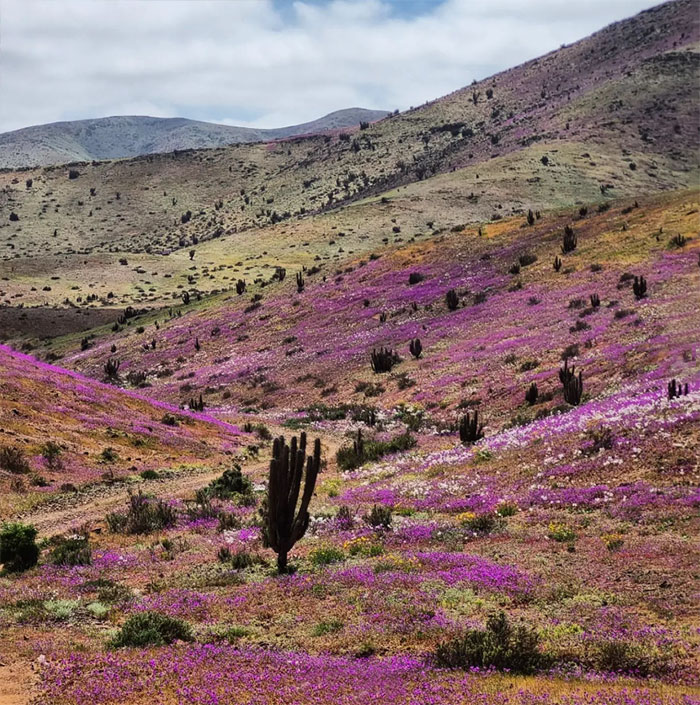
What we really like about the composition of this photo is the way the opposing slopes meet and almost give the impression of the colors tumbling toward each other. The way the cacti are placed also adds to the effect.
Frost Flowers
This amazing photograph of frost flowers—not to be confused with ice flowers—is almost poetic. Frost flowers are formed by a sudden drop in temperature that quickly freezes the moisture and sap of plants and fauna and gives the impression of ice flowers.
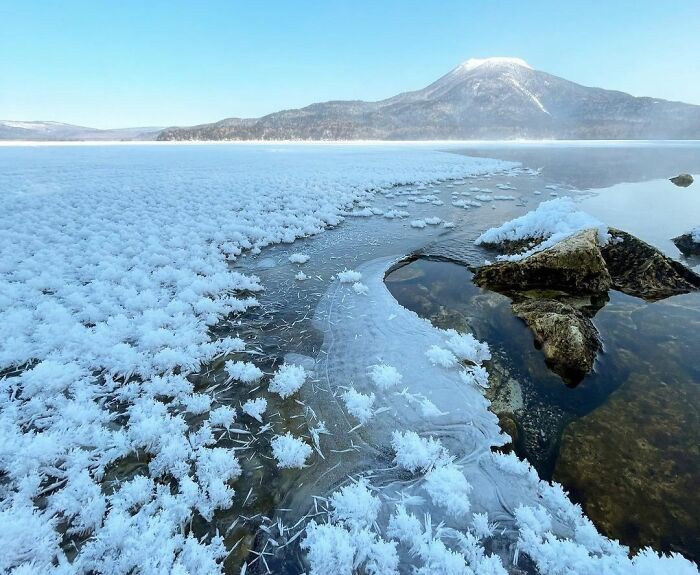
The petals of these “flowers” are very delicate and will immediately break apart if touched, and they will almost instantly melt when the sunlight hits them. To get a glimpse of them, you need to look in shady areas early in the morning near young sea ice.
Catatumbo Lightning, Venezuela
The world is already beautiful, but it’s when two phenomena meet that the real show begins. Catatumbo lightning occurs when hot and cold air meet. As per its name, it can be found where the Catatumbo river flows into the Maracaibo lake.
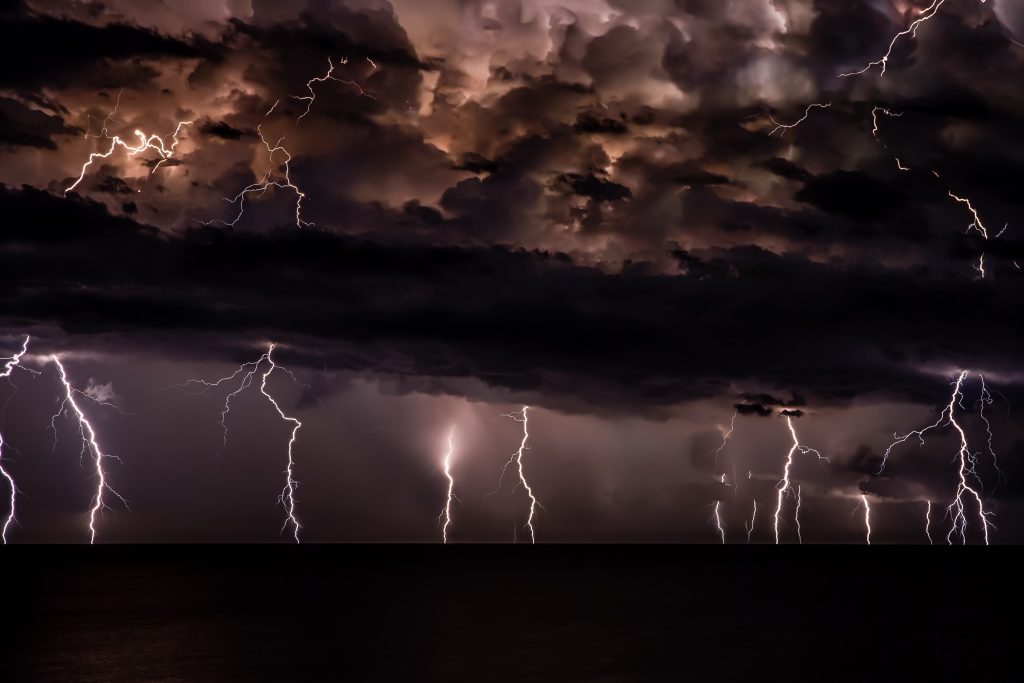
We love watching thunderstorms, but seeing them happen an average of 150 nights a year for nine hours can be overwhelming. We’re content to look at the picture and sit inside on rainy days to watch lightning from the safety of our homes.
Kjeragbolten Boulder, Norway
When the glaciers in Norway melted, the collapse of the ice resulted in this boulder, known as the Kjeragbolten boulder, being transported and relocated into this rather awkward spot. It is now wedged and stuck absolutely fast in its current location.
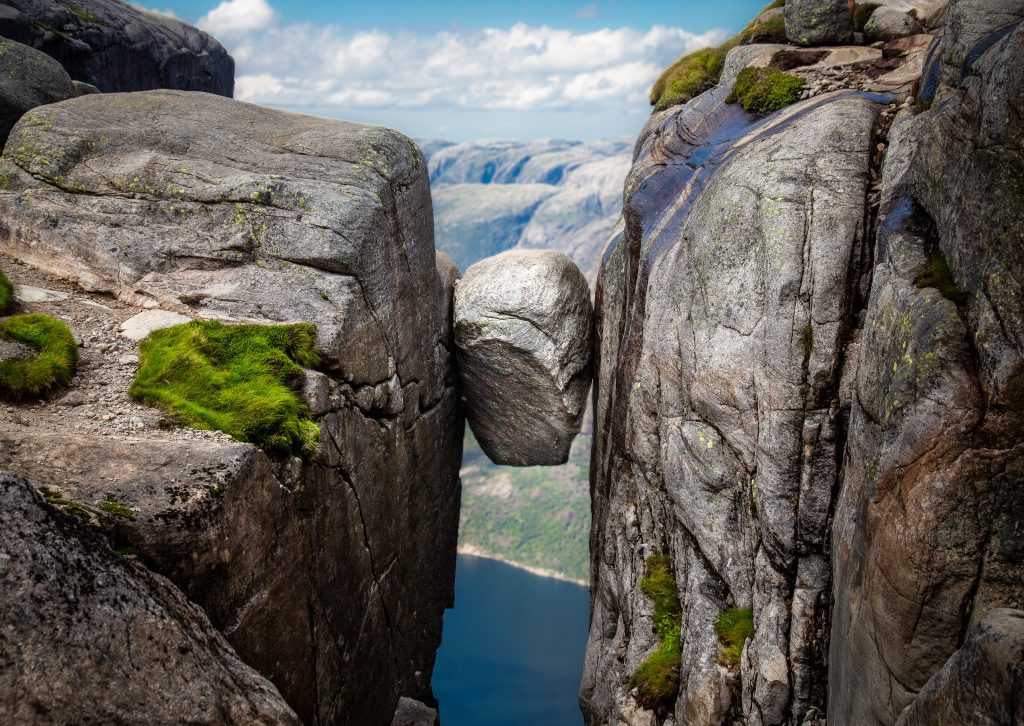
It is now on a rather popular hiking trail and has become something of a tourist hot spot. We love the way that the boulder appears to be suspended between these two great big granite pillars. Another brilliant example of nature doing her thing.
Fallstreak Hole
No, this isn’t actually a hole in the sky, though we’ll admit that it does look like one. Fallstreak holes are formed when the temperature of the cloud is below freezing, but the water in the cloud has not yet reached a freezing point.
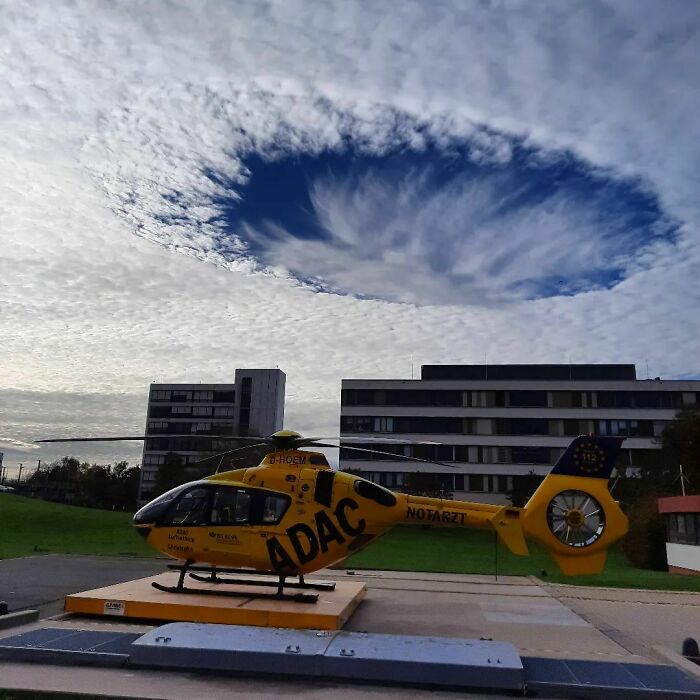
There’s something almost apocalyptic about this image. It reminds us of The Day After Tomorrow when unnatural weather occurrences started wreaking havoc. Even though we know they’re natural, we’d be on guard if we ever spotted one in real life.
Socotra Dragon Trees, Yemen
According to local legend these magnificent Socotra trees bleed dragon blood. We are not one hundred percent convinced by this, but we are certainly impressed with how they look so neat and tidy clustered upon the slope of the hillside.
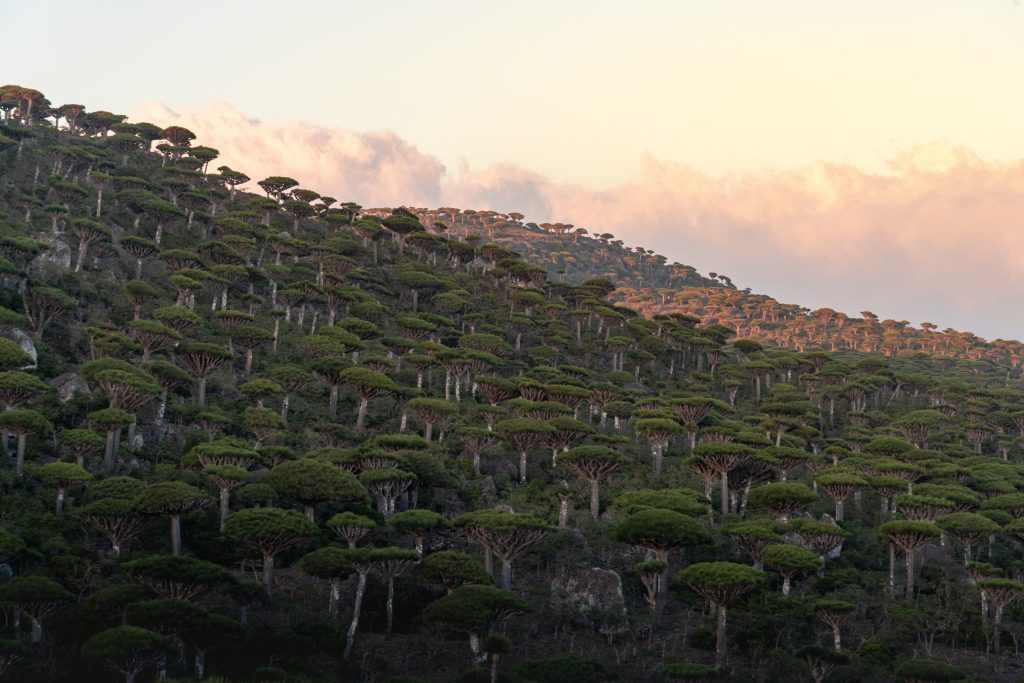
These iconic trees are famed for their densely packed crown and also for the distinctive red sap that gives them their name. People have often said that they look like umbrellas, although “Umbrella tree” doesn’t sound as cool as “Dragon’s blood.”
Sandstone Waves, Arizona
This exciting geological feature is the result of hundreds of millions of years of work. These used to be sand dunes that have been converted into rocks. In addition to forming stable structures, they grew both vertically and horizontally over time.
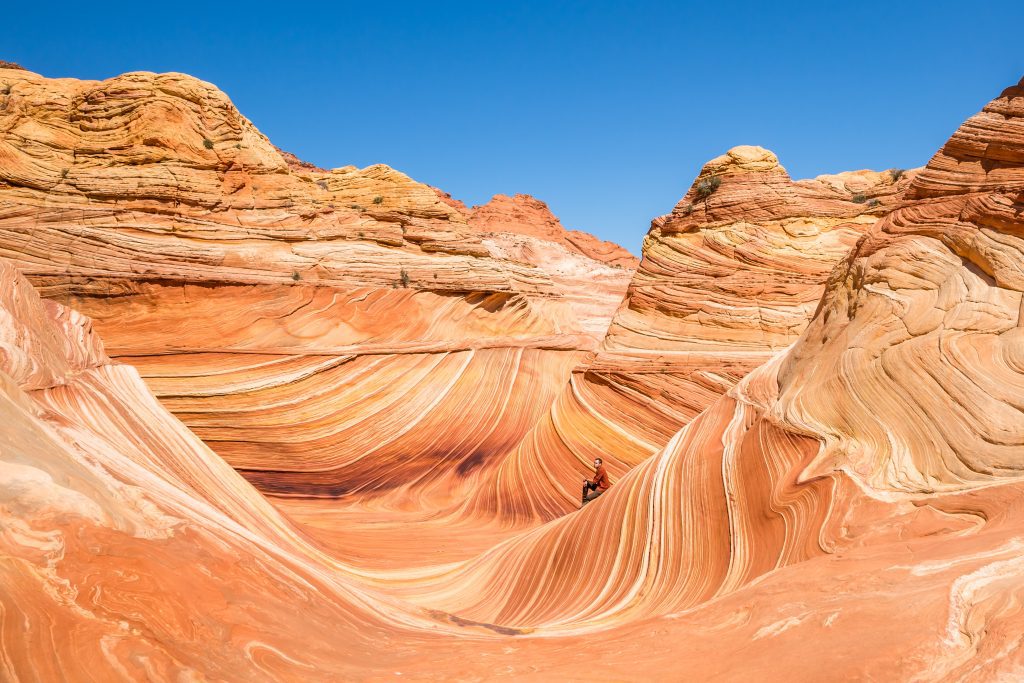
Moderate erosion from wind and rain has subsequently affected their surfaces and given the wave-like impression that we can see today. This example in Arizona is a popular tourist destination; it’s not hard to see why! The streaked canvas is a stunning setting.
Mammatus Cloud
This unusual and soft-looking cloud structure is often seen after a tornado has subsided and passed—when it’s safe to go outside and cloud watch again. They can appear to be either opaque or translucent and can spread over a range of one hundred kilometers or more.
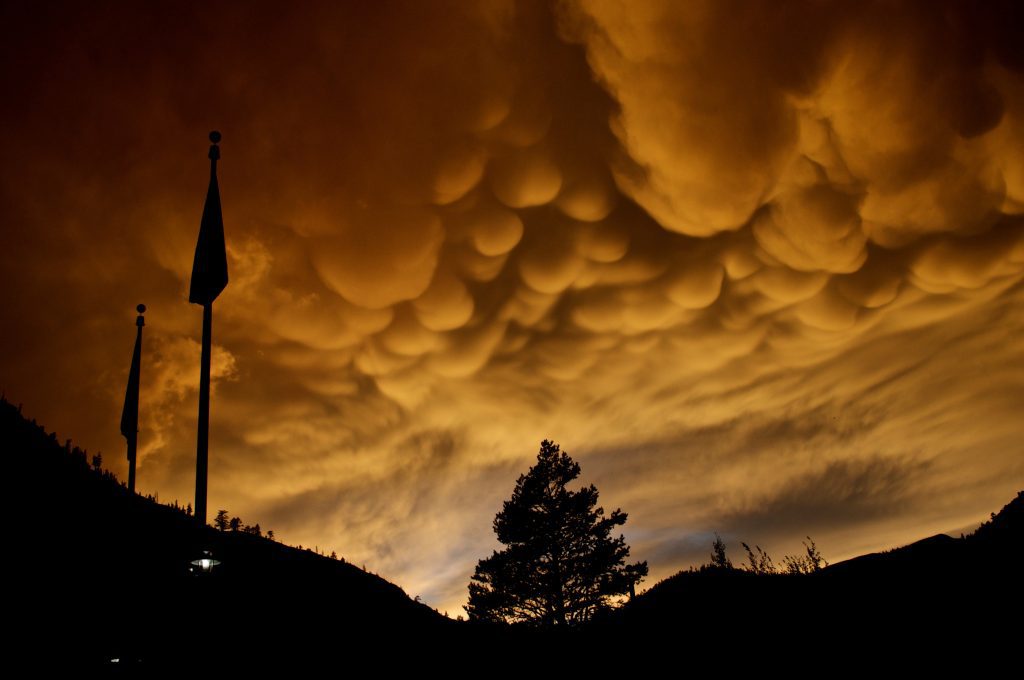
They can also on occasion appear before a storm, and they certainly give off a certain sort of ominous vibe to hail a brewing storm. Then again, their name is less terrifying when you learn that mammatus clouds are named for their mammary-like appearance.
Giant’s Causeway, Ireland
The Giant’s causeway in County Antrim on the northern coast of Northern Ireland was declared a World Heritage Site in 1986. And the world didn’t forget about it as, in 2005, it was named one of the greatest natural wonders in Britain.
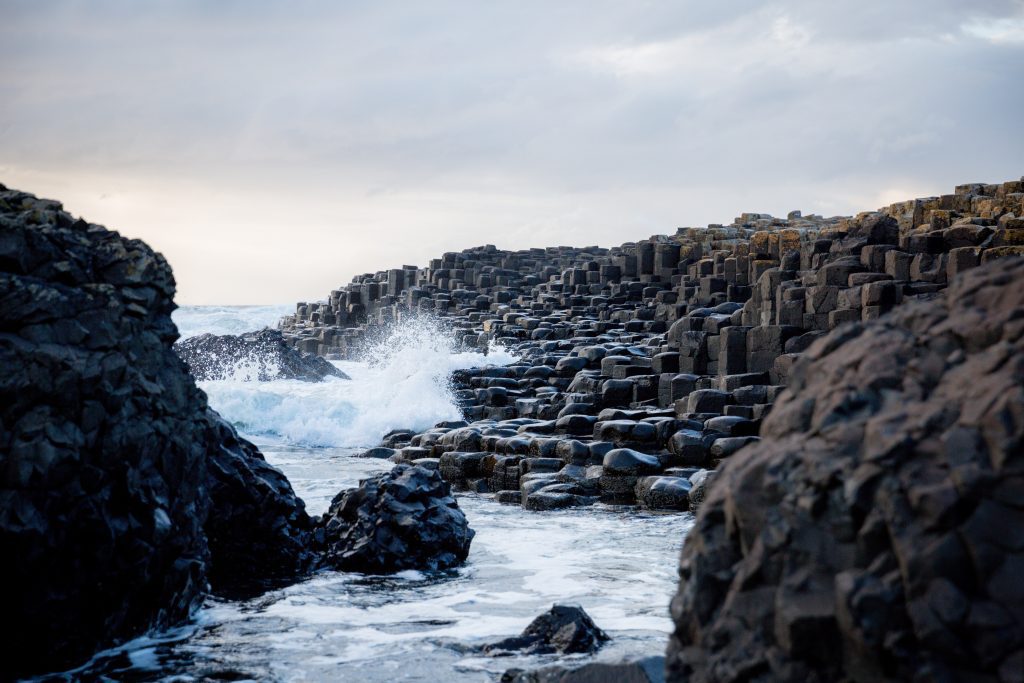
Most of the columns that form the stepping stones that make up the Giant’s Causeway are hexagonal in shape and almost give the impression of being man-made. In actuality, they were made by volcanic activity some sixty million years ago.
Blue Volcano, Indonesia
If we didn’t know any better, we’d think this was the work of CGI, perhaps when the special effects team for Avatar was building Pandora. However, the visceral power and beauty on display can be found right here on Earth, in Indonesia.
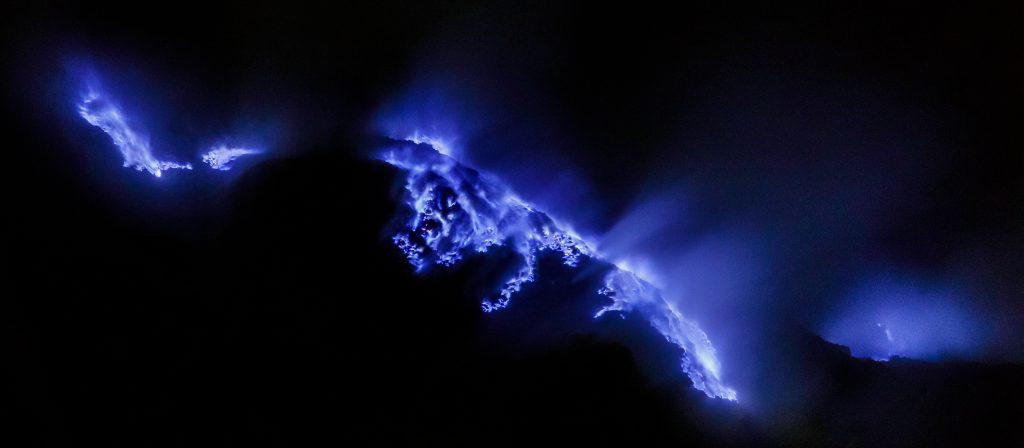
The stunning electric blue color is derived from the high quantities of sulphuric gas, found within the volcano’s chemical makeup. This isn’t the first glowing scene you’ll see on this list, so stay tuned for more vibrant works of nature.
Great Blue Hole, Belize
This almost perfectly circular hole in the ocean near Belize was formed during the last ice age when the sea level was significantly lower than it is today. As the sea level rose the great blue hole became deeper and bigger.
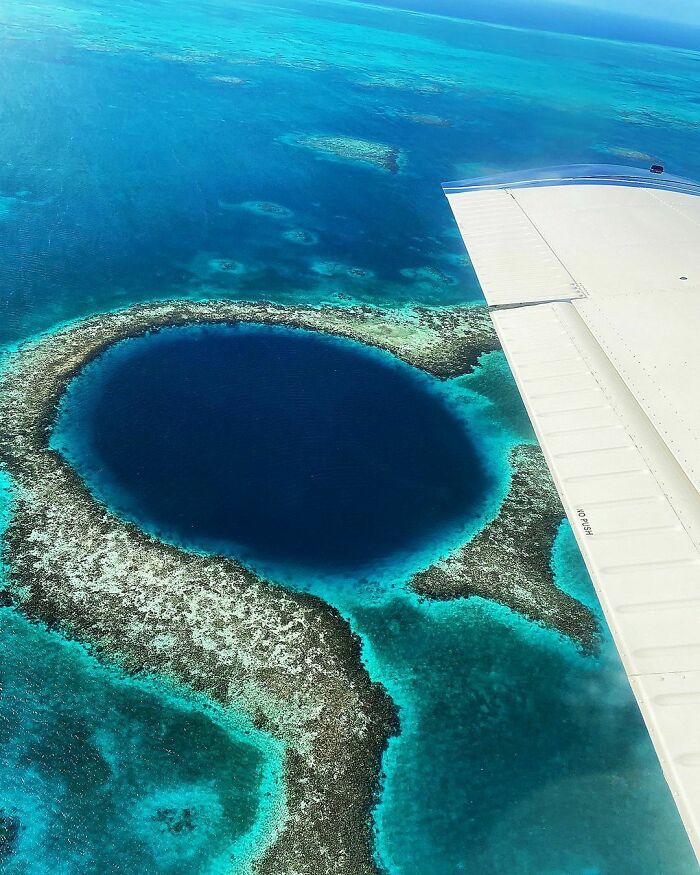
Today it is known as a favorite spot for scuba divers to explore and investigate. Who knows what strange and mysterious creatures lurk far down in the hole’s chasm-like depths… We’re happy enough looking at the picture, thank you very much.
Desert Rose
Despite its name and appearance, this is not an actual rose. This pillar is a formation of Gypsum minerals that are found in sandy and hot environments. The formations grow and are shaped by the contrast between wet and dry conditions.
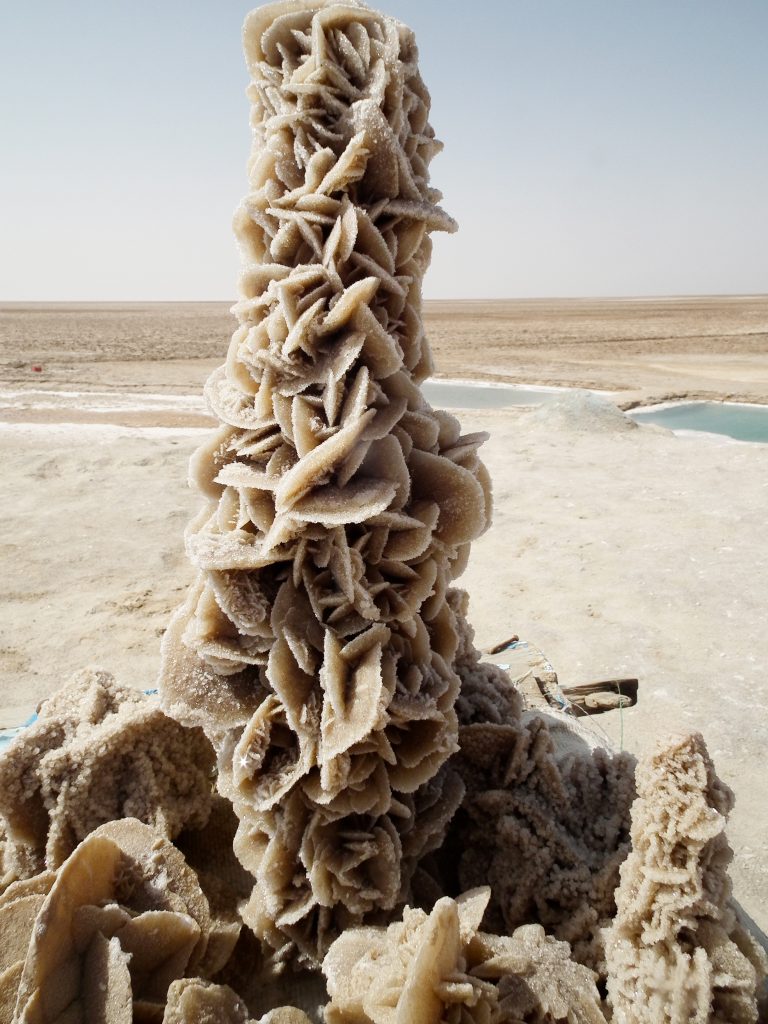
This particular example is a stunning representation of how ornate and complex these formations can become if the conditions are just right. These are quite prevalent in deserts around the world, but that doesn’t make them any less weird to see.
Frozen Ice Bubbles, Canada
It seems that ice is a great medium for natural art. These patterns are bubbles, caused by emissions of methane which freeze in these elaborate and ornate compositions. The heart-shaped bubble on the right-hand side is a rare treat, though.
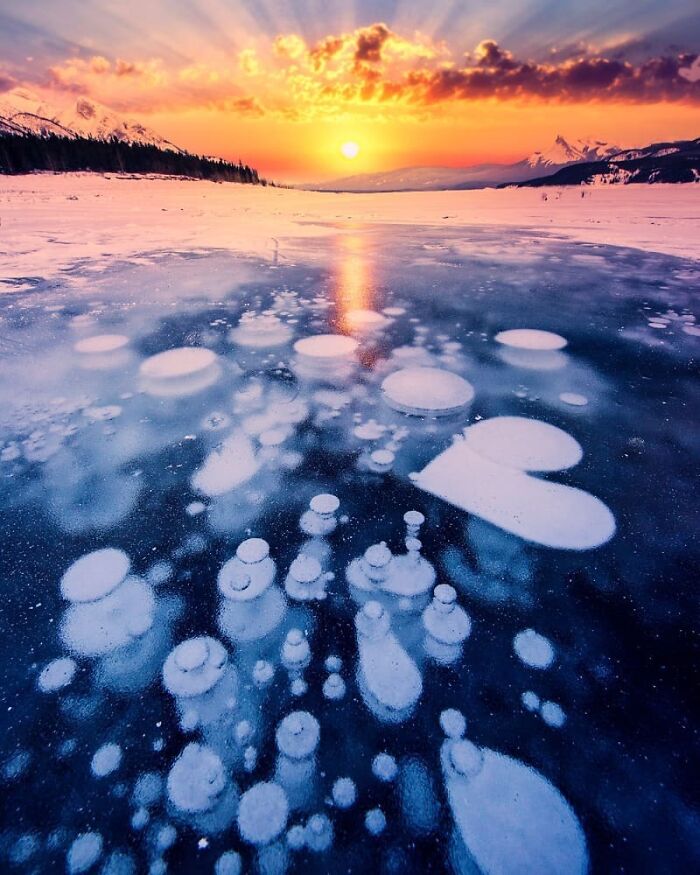
Canada isn’t just Toronto, Vancouver, hockey, and moose. There are vast stretches of land, uninhabited and left to let nature do its thing. This picture makes us want to go on a months-long trek across the arctic regions of the country.
Circumhorizontal Arc
We all know what rainbows look like, and although we know what causes them, there’s still magic in them. And they’re not the only atmospheric phenomenon to come from refracting light. When sunlight is refracted through ice crystals, it forms a circumhorizontal arc.
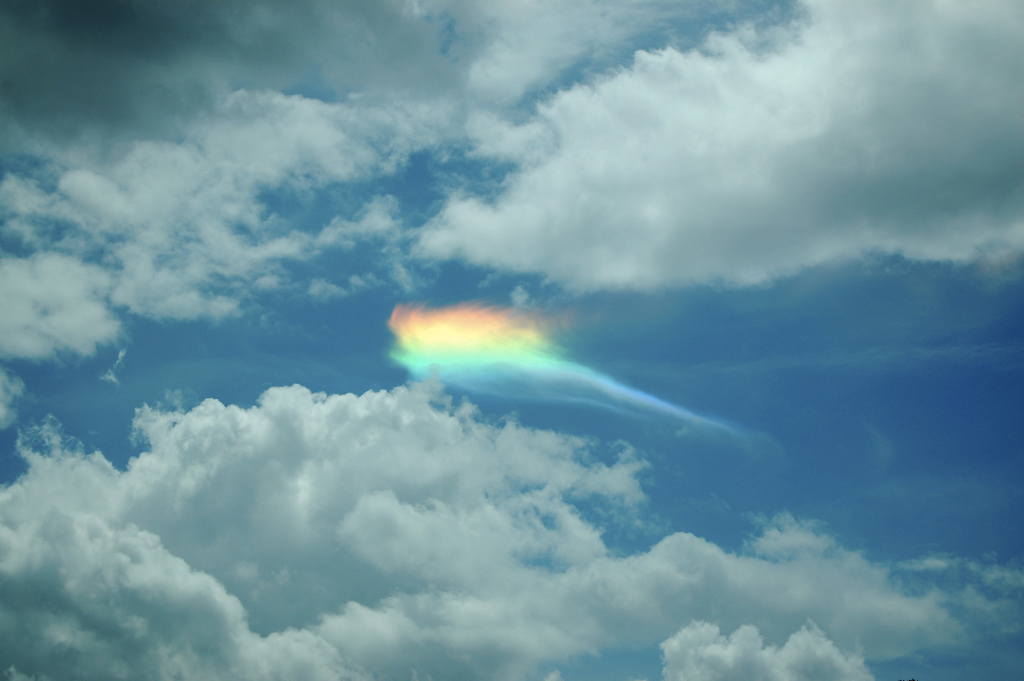
It almost looks as if a UFO is streaking through the sky. Despite its other name, “fire rainbow,” these are not actually rainbows; at least, not in the way we’re used to. While circumhorizontal arcs aren’t rare, the striking flame you see above isn’t as common of a sight.
Sky Mirror, Bolivia
This photograph is taken at Salar de Uyuni—the largest salt flat in the whole world. The salt flat is almost a perfect mirror and when the sky is as bright and decorated with clouds as it is here, the effect is jaw-dropping.
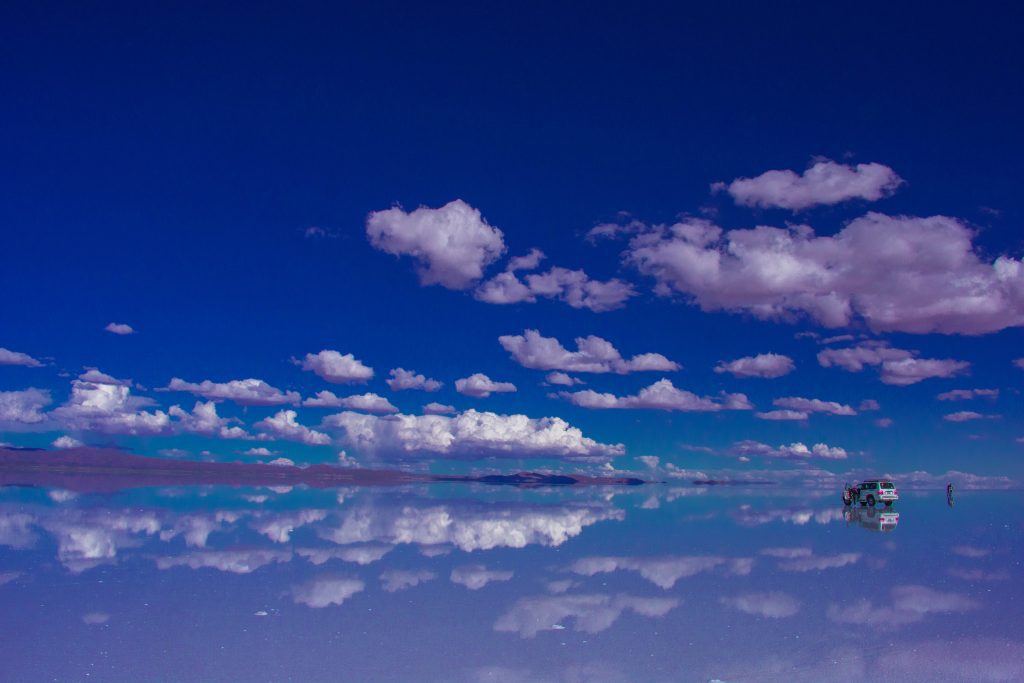
People have joked about humans’ obsession with mirrors—look up Body Ritual Among the Nacirema by Horace Miner—but it seems like mother nature isn’t immune to vanity. It must be pretty trippy to look down and only see clouds in a clear blue sky.
Aurora Borealis, Iceland
No list of weird and wonderful natural phenomena would be complete without a shout-out to the famous Northern Lights, aka Aurora Borealis. This glorious display of light refracting through atmospheric disturbance is stunning and glorious in both its nature and visual appeal.
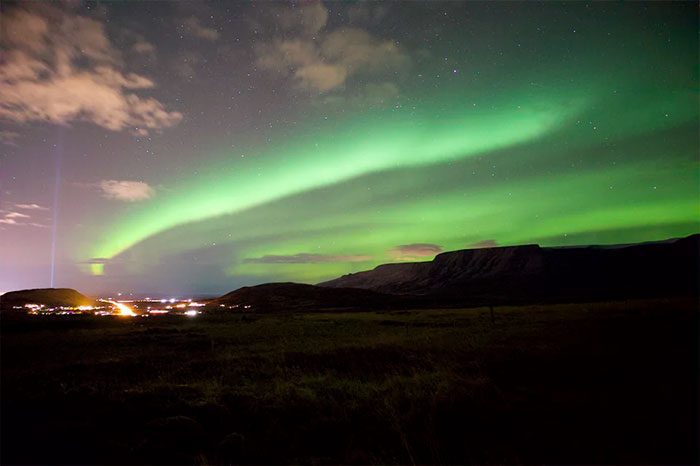
The Aurora Borealis is best viewed from the northernmost latitudes, particularly within or near the Arctic circle. This particular photograph was taken in Iceland which is famous for getting some of the finest displays. Definitely one for the bucket list.
Bismuth Crystals
If we’ve learned one thing so far, it’s that the atmosphere is home to some of the most stunning sights. But we can’t forget the geologic formations that occur within our reach. Let’s take a look at one of the most radiant metals, Bismuth.
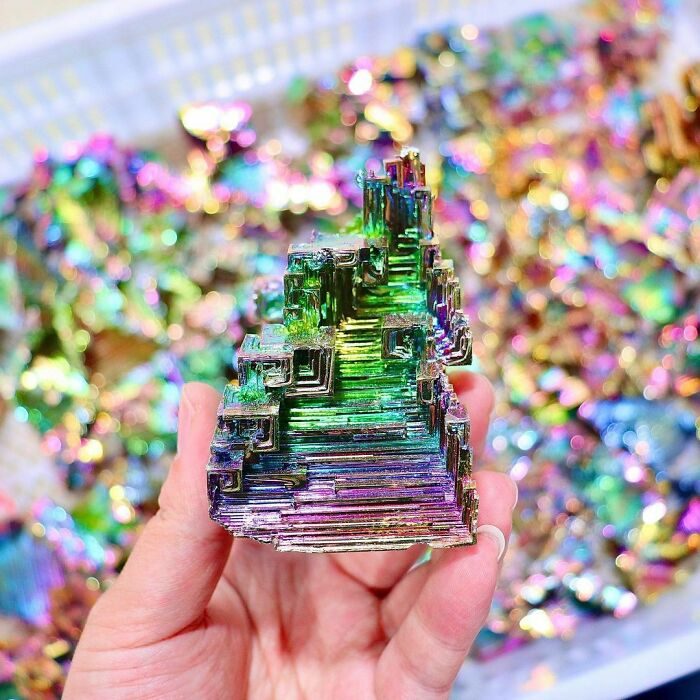
This brittle metal has a highly shined hue that gives it the ability to radiate such glorious and profound colors across its surface. It is actually widely used in pigments and also in certain pharmaceuticals. The geometric pattern only elevates the crystalline structure.
Halos
Similar to fire rainbows, these halos require just the right temperature and amount of ice crystals in the atmosphere high above the earth’s surface to form. But when the correct circumstances occur, the combined effect creates a wondrous, alien-like sight.
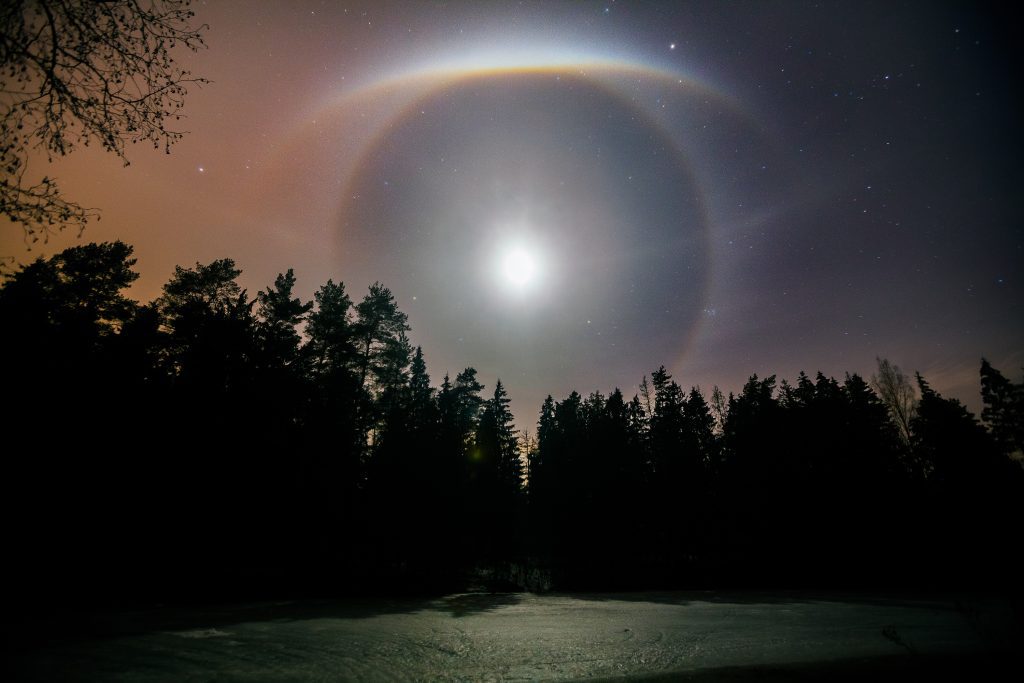
The way the halo encircles the moon gives this image the impression of a giant eye looking down at the Earth from the peaceful night sky. This is one of our favorite images on the list and something we’ll look out for in real life.
Glowworm Cave, New Zealand
Most of these Glowworm Caves are found in the southern hemisphere, though some species of glowworms that make such a sight possible can only be found in New Zealand. This particular example is from the Waitomo Caves which were formed over 300 million years ago.
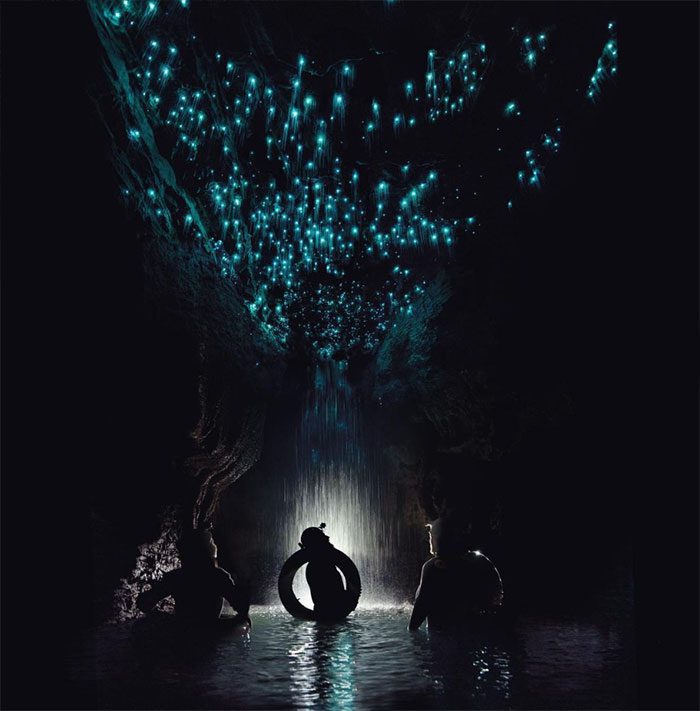
Arachnocampa luminosa is the insect responsible for the Waitomo Glowworm Caves. Two states of the worm, pre-maturity, are bioluminescent—larval and imago stages. The next time you dis gnats, take a moment to remember insects like these that make the world a more beautiful place.
Moonbow, Hawaii
Also known as lunar rainbows, they differ from a regular rainbow in as much as they are produced by moonlight refracting through droplets of moisture which results in such incredible sights as this. They are, of course, rarer than normal rainbows.
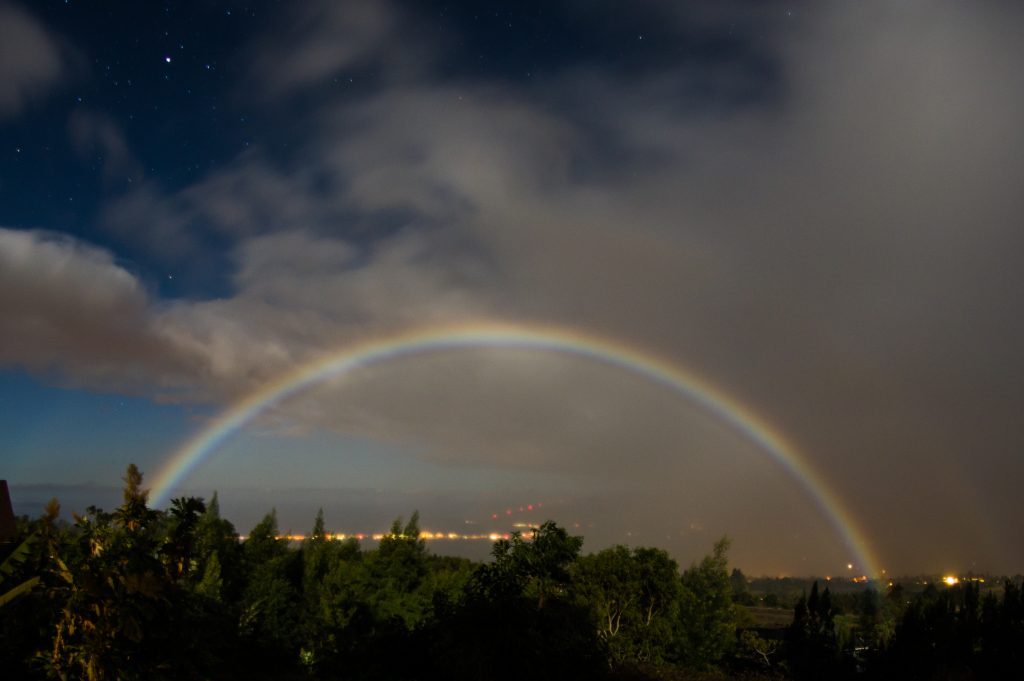
Their rarity of them makes them even more exciting than a standard rainbow and the way they stand out against the night sky adds to their visual appeal. Technically, these rainbows are still the result of sunlight, albeit in an indirect way.
Bioluminescent Shore, Maldives
It almost looks like the seashore has been studded by stars or encrusted with bright luminous jewels. In actuality, this effect is caused by certain organisms that have bioluminescent qualities, and like the New Zealand glowworms, we are certainly glad they exist.
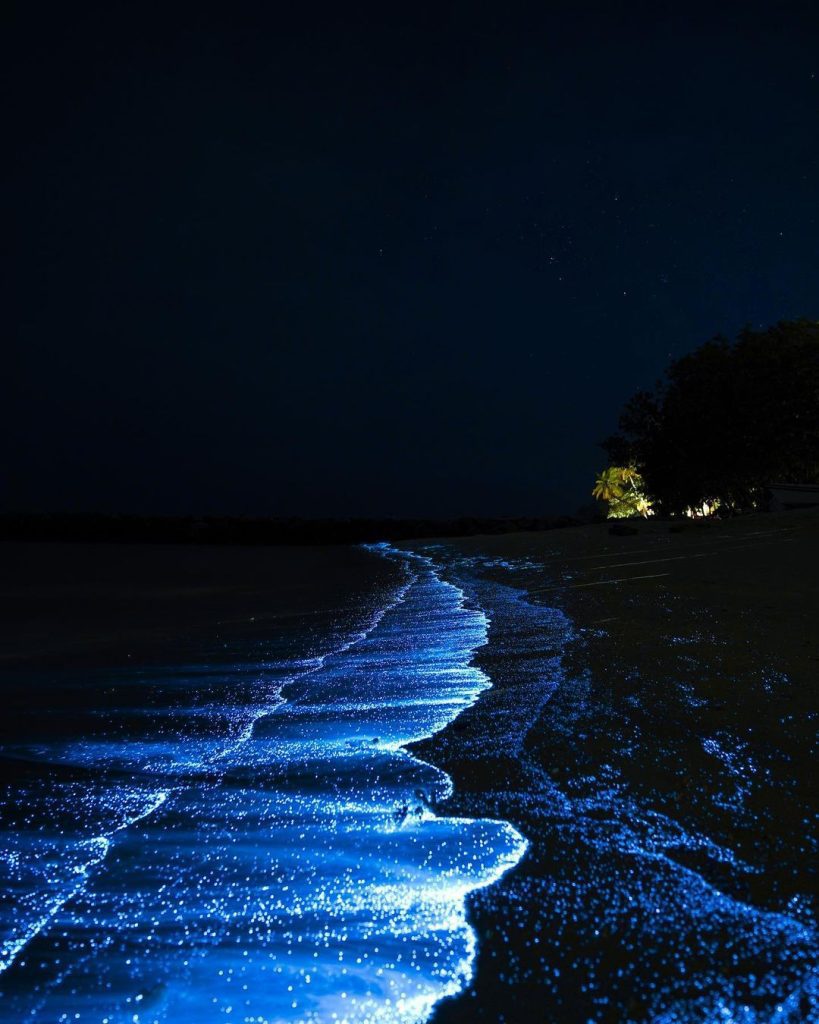
Once again, we could easily mistake this for a piece of art from Pandora. Can you imagine walking along this sure and being right next to such a wondrous and unusual sight? It looks so peaceful and yet so alive at the same time.
Lenticular Clouds
Volcanoes have a natural appeal to them at normal times, but when they are crowned by lenticular clouds, as seen in this image, their visual appeal is infinitely enhanced. Lenticular clouds are formed because of air temperature interactions. That’s right; temperature is once again the culprit.
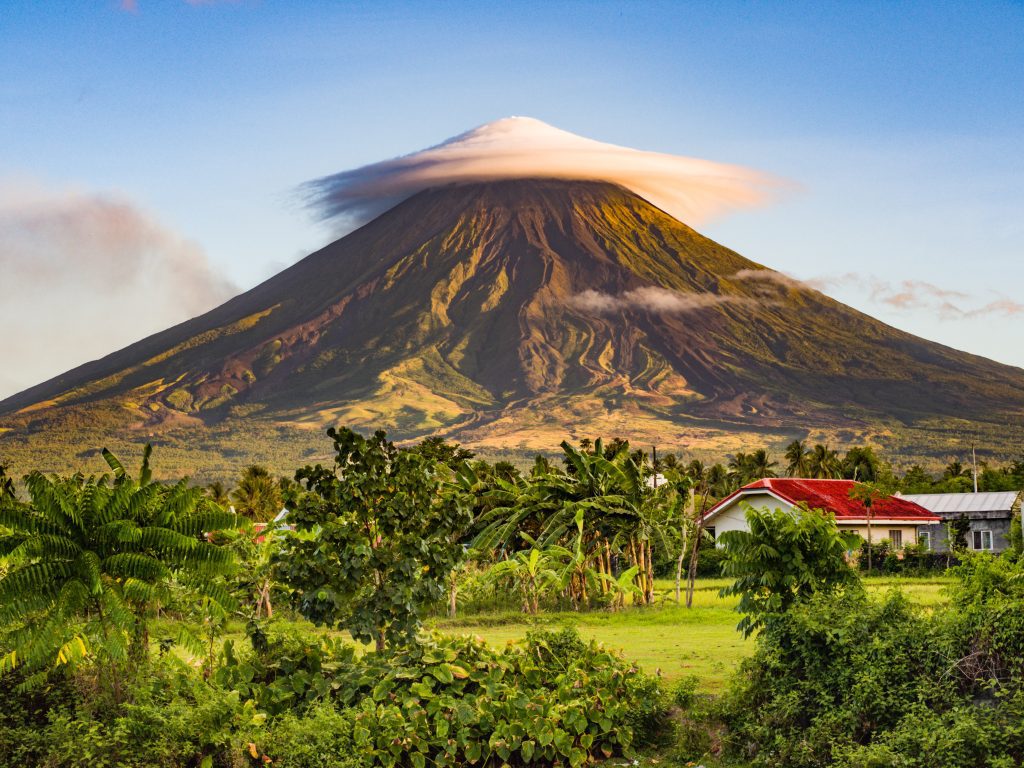
This is the Mayon Volcano which is pretty impressive in its own right. But it looks even cooler when it’s wearing a hat—sorry, not sorry for the joke. These clouds can form around peaks of high mountains as well. A brilliant image, to say the least!
Light Pillars, Canada
When ice crystals are suspended in the air due to extremely cold conditions, the effects are almost miraculous. This image reminds us of something from an alien invasion movie, as if the UFOs are signaling their imminent arrival. The sheer beauty of it is hard to take in.
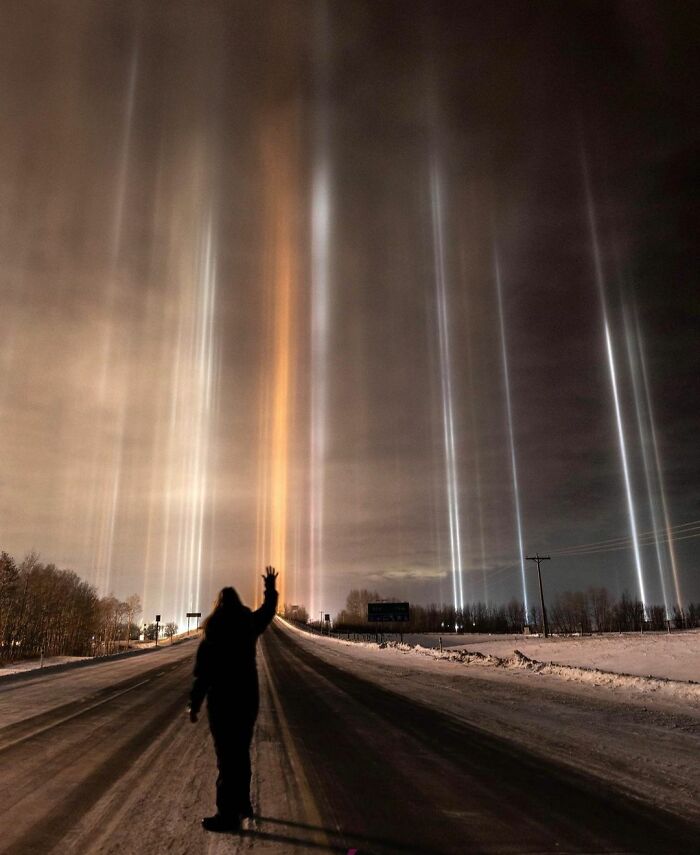
This image looks even more effective because of the figure standing in the foreground with one hand held up to the light pillars. It adds another element to the photograph, and this serves to heighten the overall effect of the image we see.
